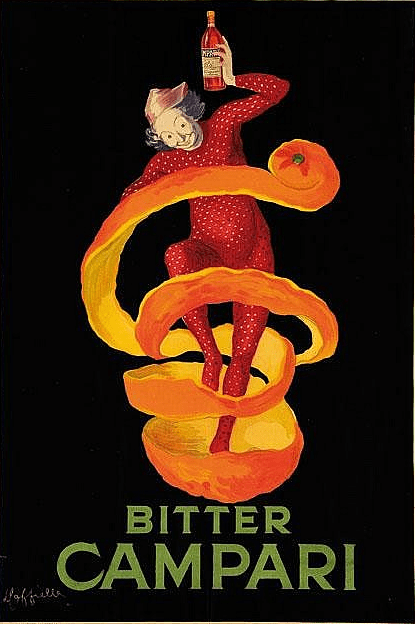
Happy 160th birthday, Campari!
Walk into any Italian restaurant and there’s a good chance you will be greeted by the above Campari poster of the Spiritello sprite with an orange peel wrapped around him. The famous image (created by Leonetto Cappiello in 1920) remains a fixture of bars and restaurants. While you may know the classic posters, do you know about the distinctive red aperitif and the men and company behind them? TravelFoodCool to the rescue!
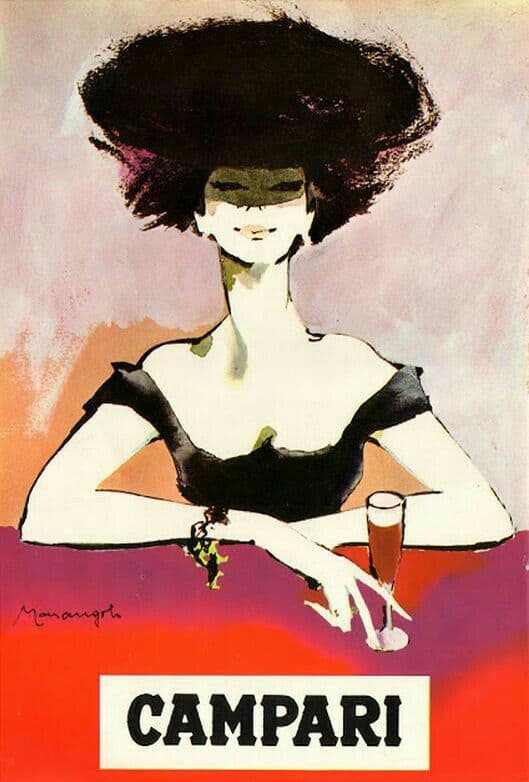
Gaspare Campari was born in Casselnovo, Lombardy (Italy was not a country yet) in 1828, the 10th child of a farmer. At 14 years old, Gaspare was mixing drinks and, while working as a waiter, he developed an interest in people’s drinking habits. He started to create his own recipes. After many different concoctions, he developed, in 1860, the bitter liqueur that he originally called “Bitter all’Uso d’Holanda” (Dutch bitter, as it was inspired by a cordial he knew from Holland).
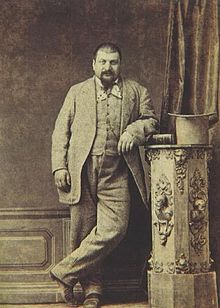
Campari, as it became known, with its distinct bitter orange taste, not only has found its way into the hearts of many, but has spawned an empire. His recipe remains a secret to this day and contains more than 60 natural ingredients, including herbs, spices, barks, fruit peels, such as chinotto (Citrus myrtifolia or a myrtle-leaved orange tree – the small bitter oranges are called chinotto) and cascarilla (a Caribbean plant whose bark can be a tonic, stimulant and reduce fever). The red colour originally came from carmine dye which is created from crushed cochineal insects! (Yes, the crushed insects are no more and this is the only change from the original to the current recipe.)
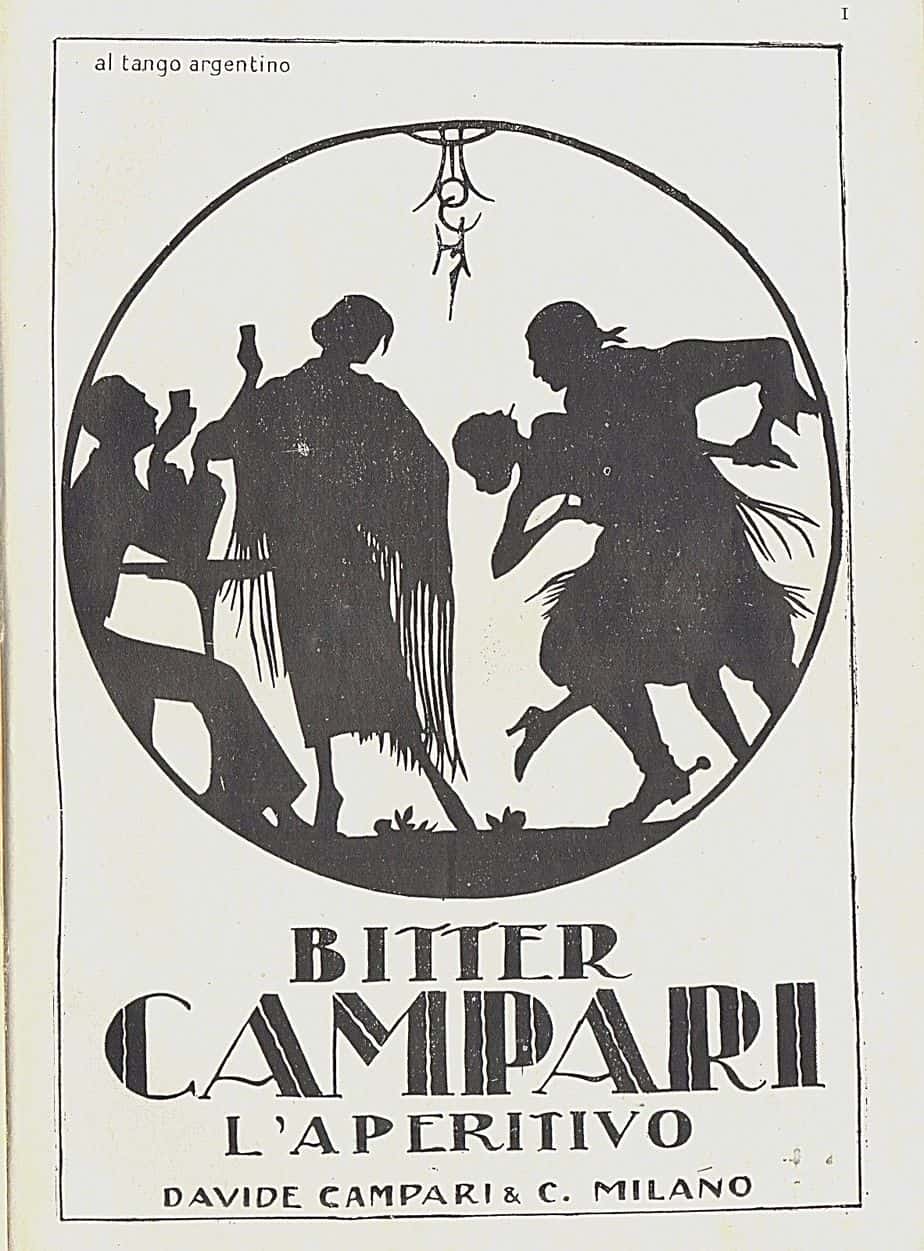
Gaspare’s original bar was opened in 1867 in the Galleria Vittorio Emanuele in Milan where patrons included such notables as Giuseppe Verdi and Giacomo Puccini (this only makes sense, La Scala is nearby). Davide was born in 1867, on the first floor above the bar. I guess this must have been left quite an impression on him; in 1915, Davide followed in his father’s footsteps and opened Camparino (the little Campari) where it still stands today. Next time you are in Milan, pop in and have a cocktail!
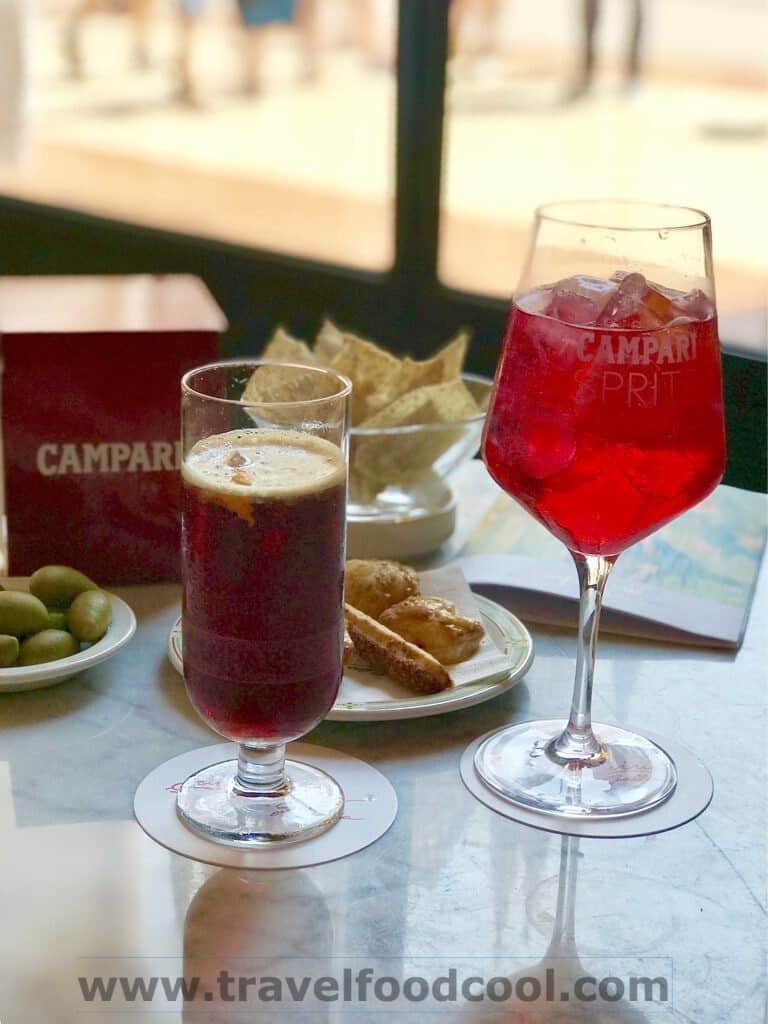
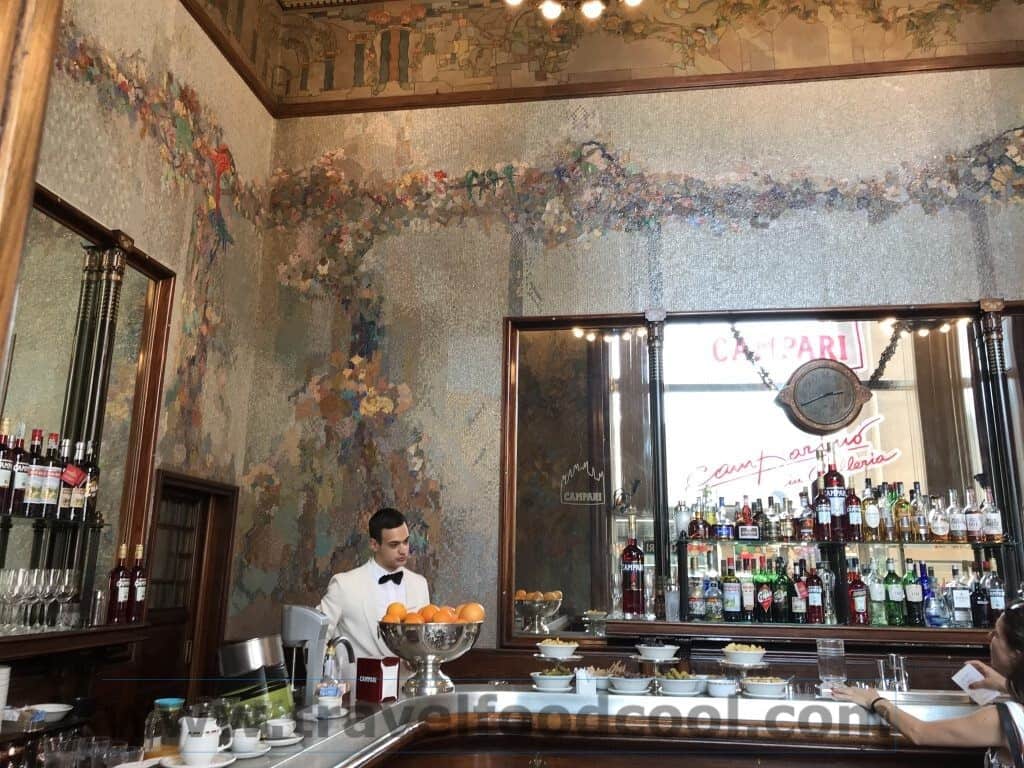
Gaspare passed away in 1882, leaving the company to his sons, Davide and Guido.
Davide fell in love with opera singer and actress, Lina Cavalieri, considered the world’s most beautiful woman. He asked her to model for a Campari ad.
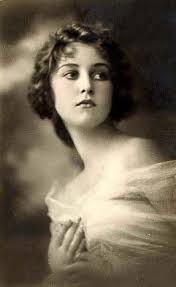
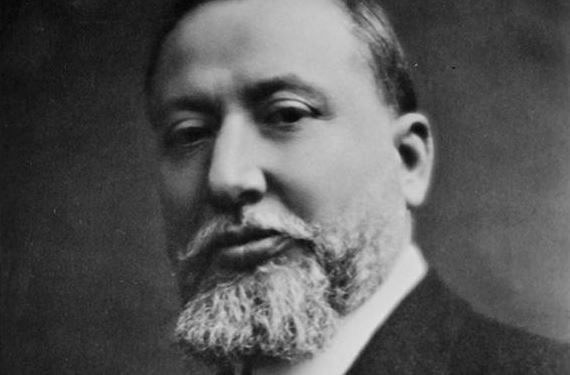
His love for her turned out to be really good for business! As he followed her from France to Russia to America (her co-star at the New York Metropolitan Opera was Enrico Caruso), he expanded the brand to both cafes and bars in Europe (talk about mixing love and business). While Lina married four times (no judging, people), sadly, none of these marriages were to Davide. Davide did marry, after age 50, but did not have any children.
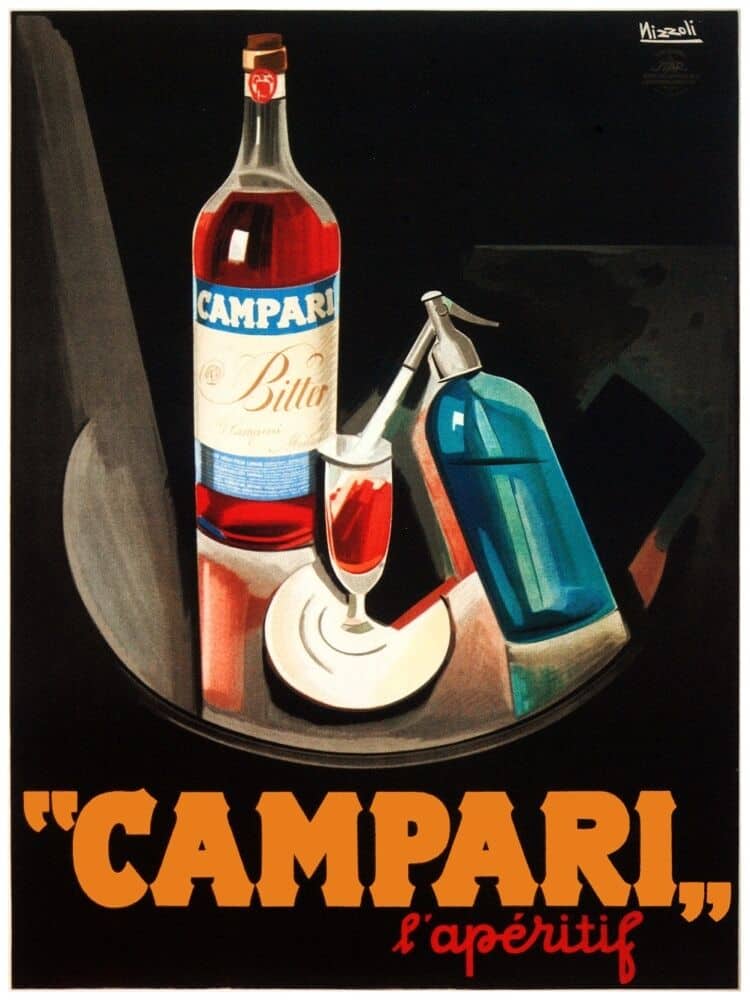
The bar led to a bottling plant in Milan in 1892, which then moved in 1904 to Sesto San Giovanni, where it still stands. The major national and international rail lines near the plant helped with distribution.
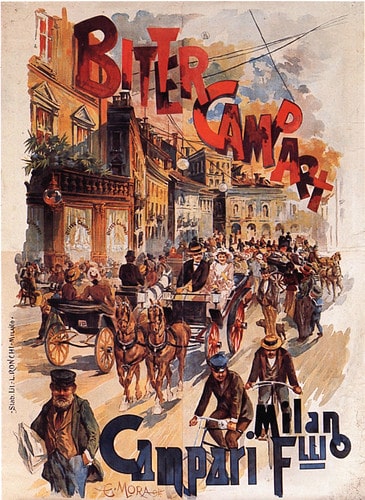
The ads first appeared in 1890 by with one by G. Mora. The 1920s saw some great artists, such as Marcello Dudovich, Enrico Sacchetti, Primo Sinopico, Ugo Mochi (famous for his paper silhouettes), the poster artist Achille Luciano Mauzan, Sergio Bruno, aka Ugo Riberson and Giorgio Federico Dabovich, creating some of the most iconic ads ever!
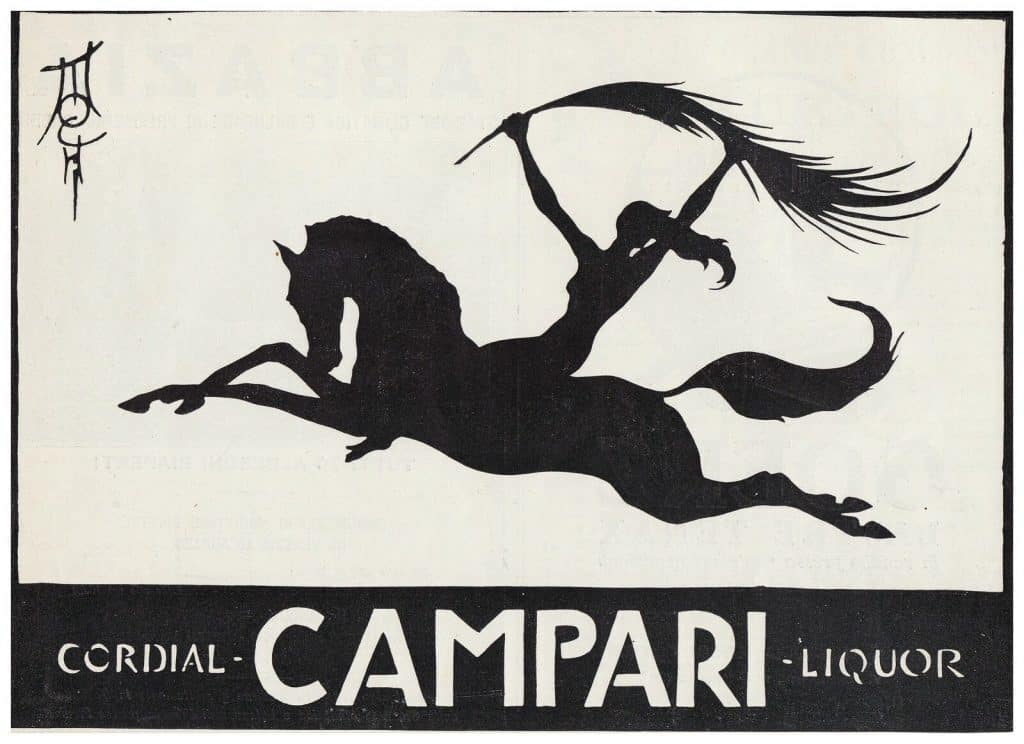
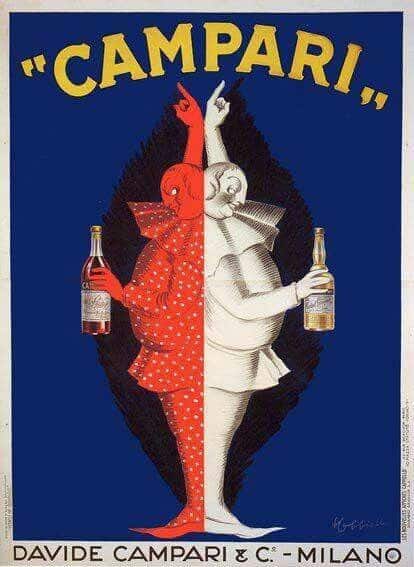
With all the really cool ads, the company was doing well, but things didn’t really take off until 1926 when Gaspare’s son Davide took charge and decided to make changes. Davide decided to double down on the core strengths and decided to focus on only two of the many products that Gaspare created: Campari Bitter and Cordial Campari. He was convinced that he could make Campari a worldwide name and brand.
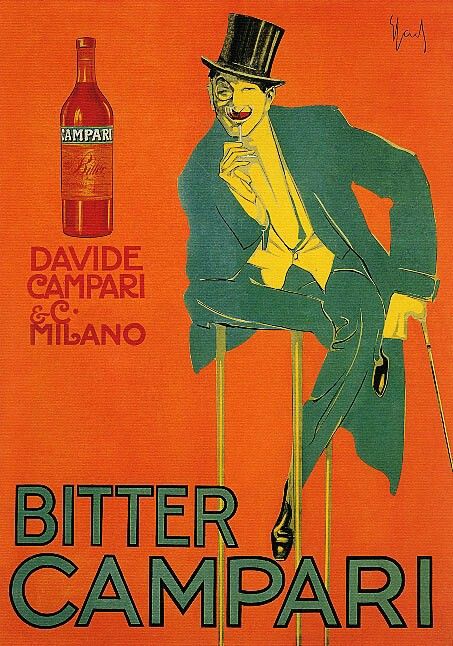
Campari has an ABV of anywhere from 20.5% to 28.5% (depending on where you live in the US, it’s 24%; in Canada, 25%; Argentian, 28.5% and Sweden, 21%). Davide wanted to reduce the alcohol content in the drink, so he originally started to pour it with soda. In 1932, in a genius move, Davide took this idea and created the first single-serve aperitif in the world, the Campari Soda! Think about that for a moment, the first one drink “cooler” was invented almost 90 years ago. While it may seem like a simple thing, it was pretty revolutionary at the time.
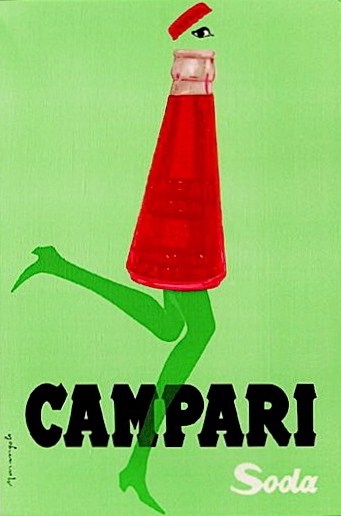
In another genius marketing move, the bottle was created by Italian futurist painter, writer, sculptor and graphic designer Fortunato Depero (who also designed several Campari ads). Walk into any Italian grocery store today and you can still see these bottle for sale on the shelf.
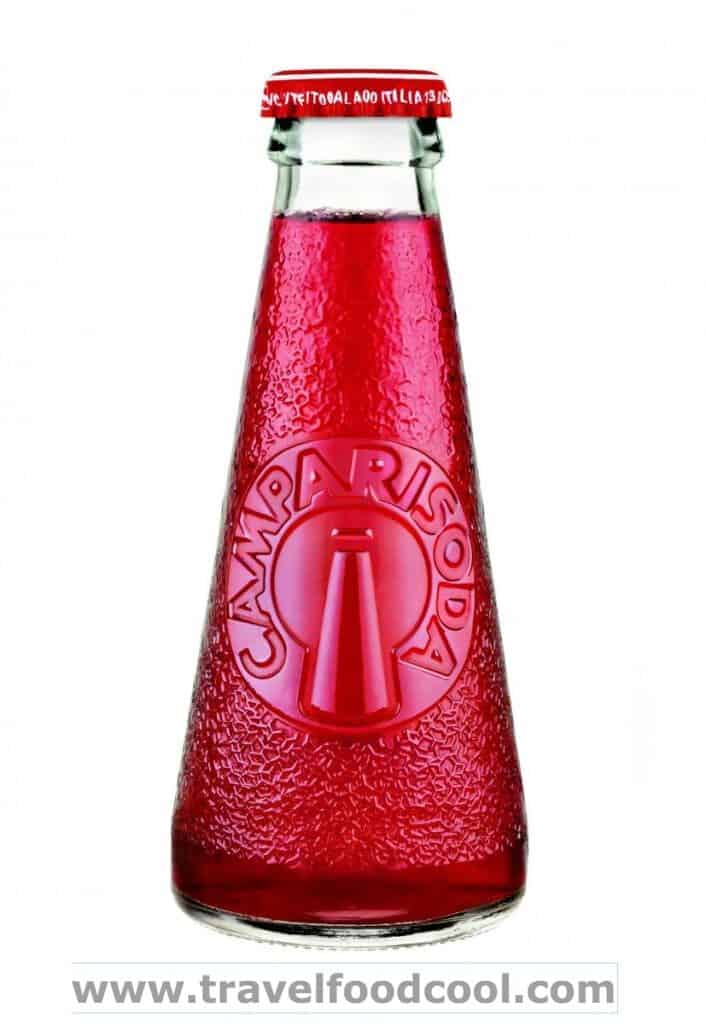
Davide passed away in 1936, 10 years before the incorporation of Davide Campari-Milano, S.p.A., which was founded on the core product, Campari. His love-struck expansion plans seemed to work and, in 1960, Campari was distributed in 80 countries; by 1990, it was found in 190 countries worldwide.
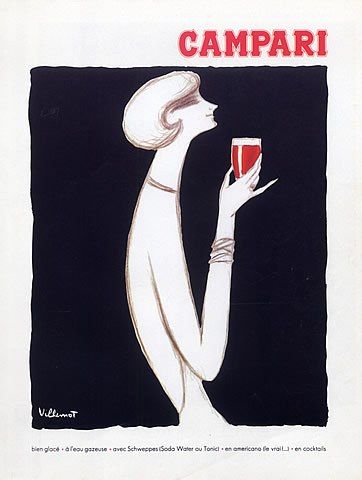
In the 1990s, the company was faced with staying as a niche company or growing the company by increasing its product line. So it went on a buying spree – like a really amazingly, crazy buying spree. Between 1990 and the present, the company acquired a portfolio that includes:
- Liqueur: Campari, Aperol, Grand Marnier, Amaro Averna, Amaro Braulio, Crodino, Ouzo “12”, Frangelico, Cynar, X-Rated Fusion Liqueur, Sagatiba, Biancosarti, American Honey Liqueur, Zedda Piras, Dreher
- Vodka: SKYY vodka, Jean-Marc XO Vodka
- Gin: Bankes London Dry Gin, Bulldog London Dry Gin
- Rum: Appleton Estate, J. Wray and Nephew, Sangsters, Coruba
- Tequila: Espolon, Cabo Wabo
- Bourbon Whiskey: Wild Turkey, Russell’s Reserve
- Scotch Whisky: Glen Grant, Old Smuggler
- Canadian whisky: Forty Creek
- Brazilian Whiskey: Old Eight, Drury’s
- Uruguayan Whiskey: Gregson’s
- Cognac: Bisquit Cognac
- Vermouth: Cinzano, Mondoro
- Mixed drinks: Aperol Spritz, Aperol Soda, Campari Soda, Campari Mixx, Campari Orange Passion, Cinzano Soda, Cinzano Cocktail, Crodino Twist, SKYY blue
- Sparkling wine: Cinzano, Mondoro, Riccadonna
- Still Wine: Liebfraumilch, Red Label, Magnum tonic
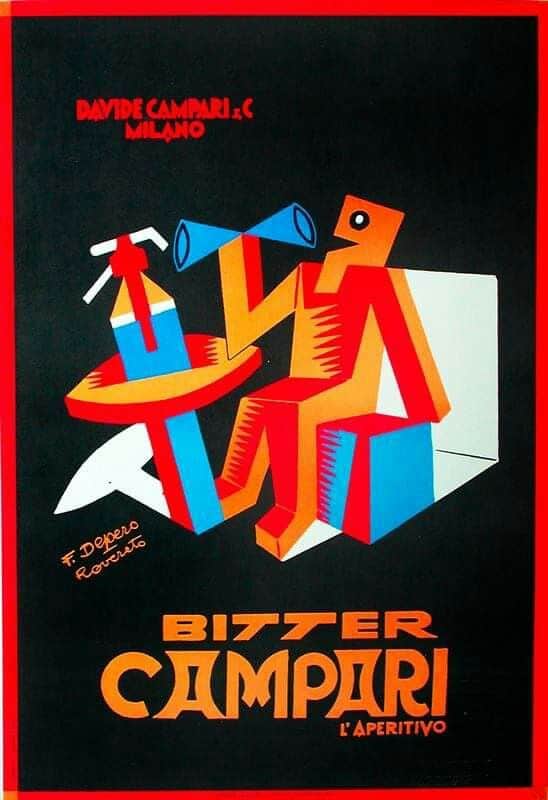
In case you didn’t guess, they are now the 6th largest globally branded beverage industry in the world. 2001 saw the company’s listing on the Italian Stock Exchange. The company has expanded and now owns 18 manufacturing plants worldwide.
The creativity of advertising has continued and a modern series of ads see a nod to the original ads of the 1920s.
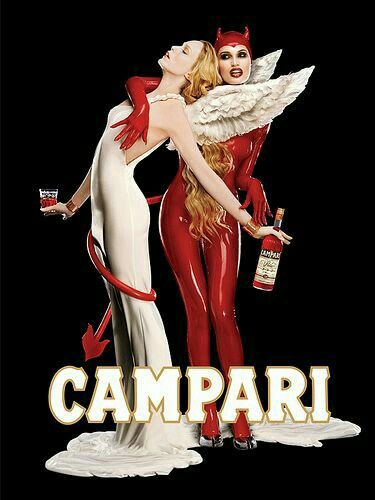
Continuing to push the boundaries of advertising and creativity, Campari has also produced short film commercials every year since 1980 – the first was directed by Federico Fellini. This year’s film, The Legend of Red Hand, was directed by Stefano Sollima (Sicario: Day of the Soldado) and highlights Campari’s most famous cocktail, the Negroni.
This leads me neatly into saying tune in next week as we celebrate the special 100 year anniversary of Negroni Week!
Cin Cin and Cheers!
Want to read about more Italian liqueurs and aperitifs? Check out past posts on Strega, Luxardo, Aperol and Amaro.


